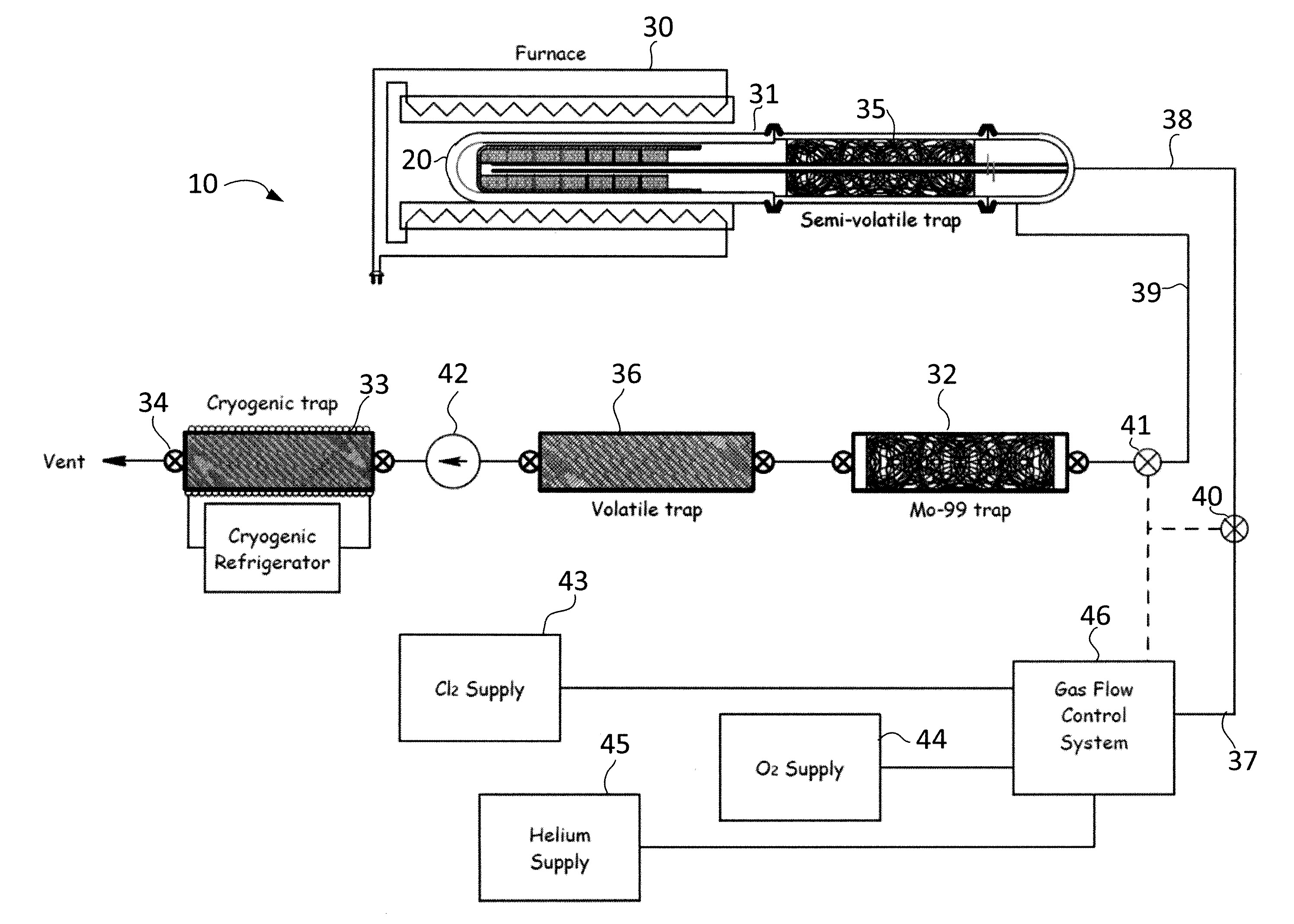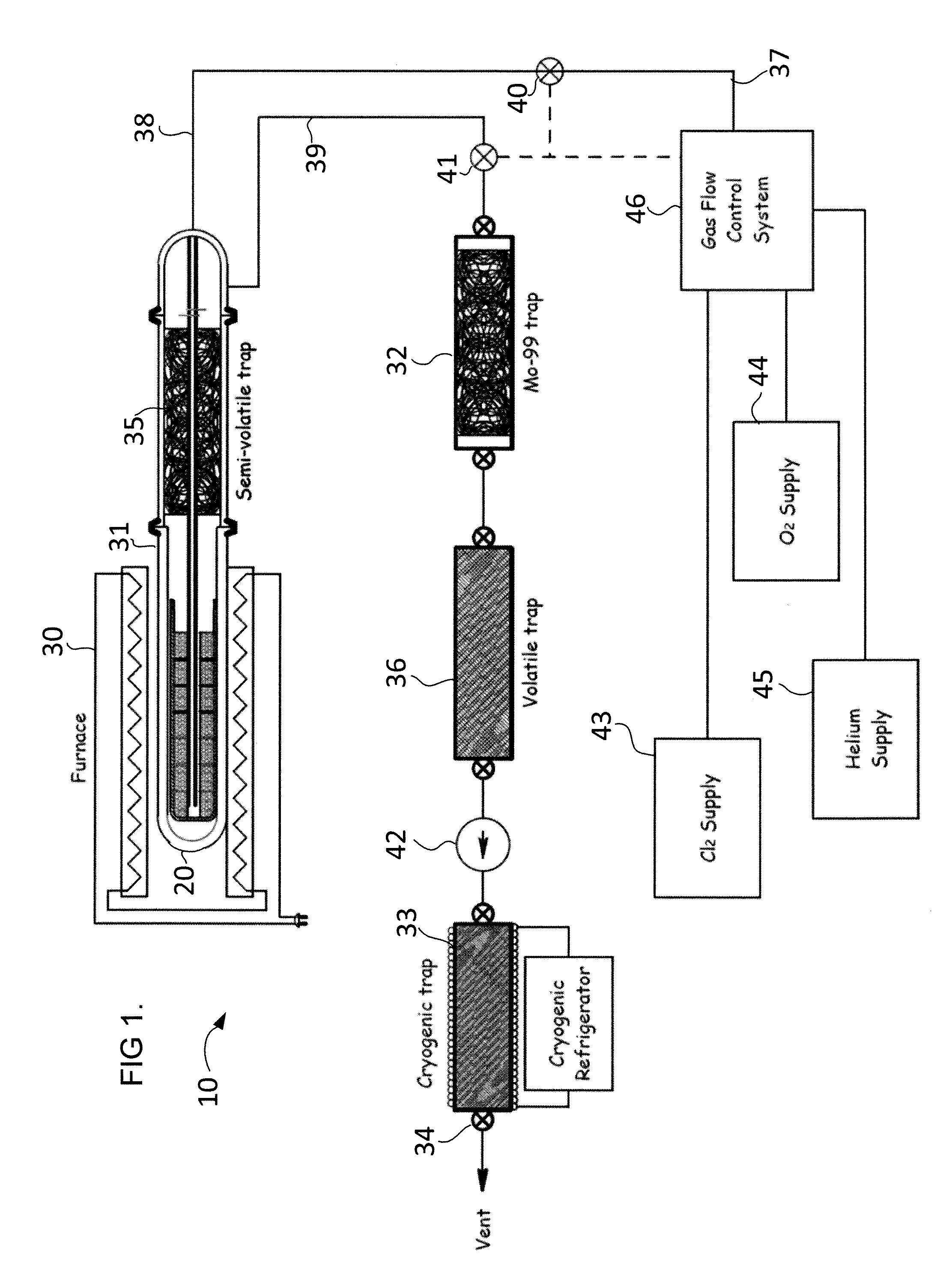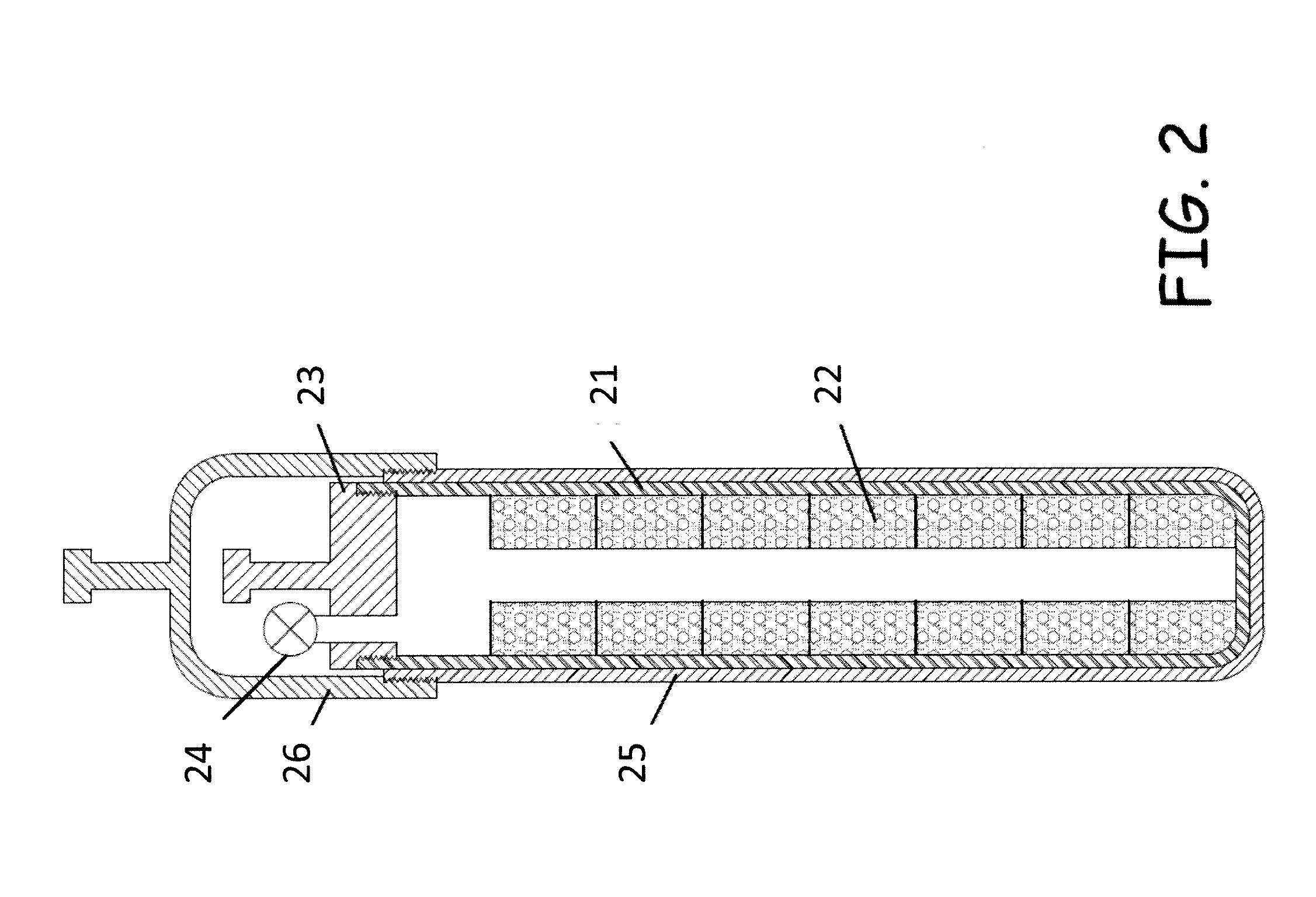[0018]The present invention provides methods and apparatus of producing and extracting Mo-99 that overcomes the drawbacks of previously-known systems. Exemplary embodiments of the present invention include gas-phase extraction of Mo-99 from a
uranium target as
molybdenum oxychloride (MoO2Cl2), preferably using a mixture including
oxygen and a
halogen, preferably
chlorine, thereby enabling Mo-99 to be produced faster, with less
capital equipment, and less
radioactive waste than previously-known methods. The
halogen preferably comprises
chlorine gas, but may be any source of
chlorine,
bromine or
iodine, while the
oxygen component of the mixture may comprise any oxygen-containing gas capable of suppressing formation of
uranium chlorides, including, but not limited to, Ox, H2O,
NOx, COx and ClOx where x can take on any chemically
permissible value (e.g. O2, O3, N2O, NO, NO2, N2O4, CO, CO2, ClO, Cl2O, Cl2O2, ClO2, ClO3). As described herein, an oxygen and chlorine mixture refers not only to a combination of
chlorine gas (Cl2) with
oxygen gas (O2) but also to a mixture with any of the above-identified oxygen-containing gases, including oxygen formed by heating uranium oxides or by partial reaction of chlorine with uranium oxides.
[0019]In accordance with one aspect of the present invention, the gas-phase extraction method is applied to reusable uranium targets suitable for use in existing reactors, such as the TRIGA® (a
registered trademark of General Atomics, San Diego, Calif.) reactor, thereby enabling establishment of a robust and reliable domestic U.S. supply of Mo-99. In accordance with the present invention, uranium targets may be irradiated in nuclear reactors and subjected to the gas-phase extraction process on a rotating basis, e.g., on alternating days, so that a relatively small number of uranium targets may be employed to provide a nearly continuous supply of Mo-99. Alternatively, the uranium targets may be continuously extracted by flowing gases during
irradiation. Any
nuclear reactor may be used for the
irradiation but a
research reactor or a reactor built specifically for isotope production may be better adapted towards Mo-99 production than a power production reactor due to the short
irradiation time.
[0022]In some embodiments, the uranium target may comprise highly
enriched uranium (>20% U-235) but more preferably comprises low enriched (<20% U-235) uranium, thereby furthering the goal of reducing worldwide distribution of highly
enriched uranium and lessening the risks of diversion and proliferation. Alternatively, embodiments designed for use with
heavy water reactors may use unenriched,
natural uranium. In accordance with the principles of the present invention, Mo-99 may be periodically extracted from the reusable uranium target, while the bulk of the fission byproducts remain trapped within the uranium target, which is disposed along with other reactor fuel when fully depleted. The methods and apparatus for producing and extracting Mo-99 of the present invention therefore are expected to significantly reduce the burden on existing long-term
radioactive waste storage facilities compared to existing methods.
[0024]In embodiments in which the uranium target is reused, the gas-phase extraction
system also may be configured to refill the uranium target with a suitable
noble gas following removal of the oxygen and
chlorine gas mixture. In an alternative embodiment, the fill gas may comprise a mixture of oxygen, chlorine and
helium gas, such that the uranium target may be heated following irradiation to cause the Mo-99 to react with the chlorine is formed during irradiation, thus avoiding the step of replacing the
helium fill gas with the oxygen and
chlorine gas mixture.
[0026]Alternatively, after the step of heating the uranium target and oxygen / chlorine mixture to a high temperature to facilitate the formation of MoO2Cl2 and prior to removal of the gases to the
recovery chamber, the uranium target first may be cooled to a lower temperature, such as 400 C to 600 C, to cause some of more volatile radioactive species, such as UO3 vapor and uranium oxychloride (UO2Cl2), to redeposit within the uranium target, while the MoO2Cl2 and volatile
fission products remain in gaseous form, thus reducing the quantity of uranium removed from the target but also precluding separation of the desired semi-volatile
fission products. In preferred embodiments, the
efficacy of Mo-99 extraction will depend on the volatility of MoO2Cl2 relative to uranium oxychloride (UO2Cl2) and other fission product species in the oxygen / chlorine
atmosphere and upon the economic incentive for recovery of the semi-volatile isotopes.
 Login to View More
Login to View More  Login to View More
Login to View More 


